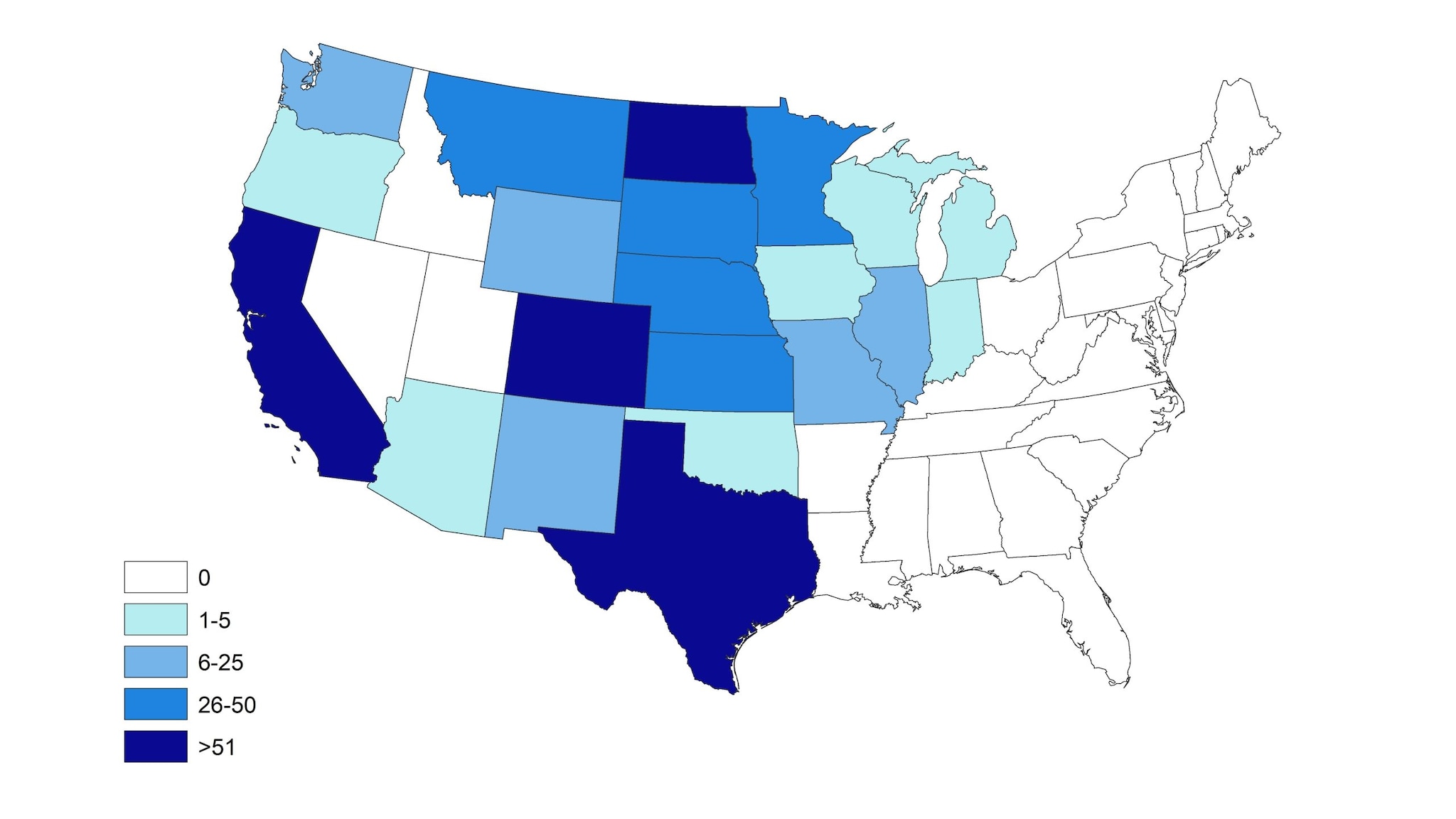Key points
- No human cases of western equine encephalitis have been reported in the United States since 1999.
- Historically, most human cases of western equine encephalitis in the United States have occurred in Colorado, Texas, North Dakota, and California.
- Outside of the United States, people living in parts of Canada, South America, and Central America have been diagnosed with the disease.

Human cases of western equine encephalitis in the United States

States that have reported cases of western equine encephalitis among people:
- 1 to 5 cases: Arizona, Iowa, Indiana, Michigan, Oklahoma, Oregon, Washington
- 6 to 25 cases: Illinois, Missouri, New Mexico, Washington, Wyoming
- 26 to 50 cases: Kansas, Minnesota, Montana, Nebraska, South Dakota
- More than 50 cases: California, Colorado, North Dakota, Texas
During the 1930s and 1940s, there were periodic outbreaks of western equine encephalitis among people. The number of reported human cases started decreasing in the late 1960s and 1970s, with no reported human cases since 1999.
Western equine encephalitis outside the United States
In addition to the United States, people living in parts of Canada, South America, and Central America have been diagnosed with western equine encephalitis. Canada had a large outbreak in 1941 and later outbreaks occurred in the 1980s.
In late 2023 an outbreak of western equine encephalitis was identified in Argentina and Uruguay affecting people and horses. This outbreak ended in April 2024. Learn more about this WEE outbreak in South America.
Large outbreaks also occur among animals (called epizootics), particularly horses. Epizootics have occurred periodically in unvaccinated horses.
